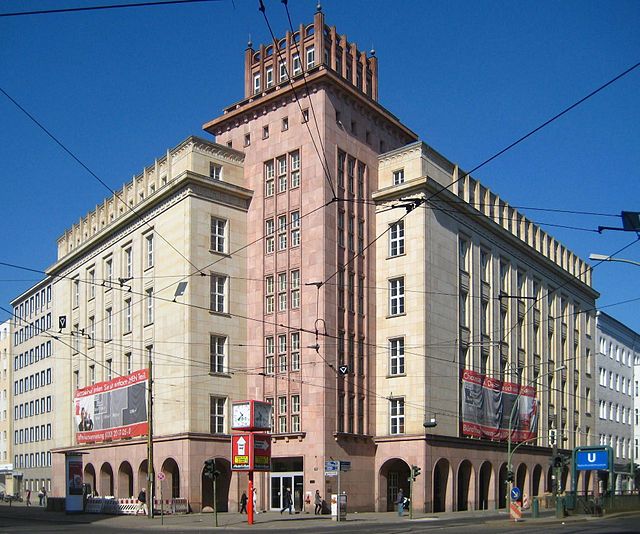Top Qs
Timeline
Chat
Perspective
Leibniz Association
German association of research institutes From Wikipedia, the free encyclopedia
Remove ads
The Leibniz Association (German: Leibniz-Gemeinschaft or Wissenschaftsgemeinschaft Gottfried Wilhelm Leibniz) is a union of German non-university research institutes from various disciplines.

Remove ads
Funding and Structure
As of 2020, 96 non-university research institutes and service institutions for science are part of the Leibniz-Gemeinschaft. The fields range from natural science, engineering, and ecology, to economics, other social sciences, spatial science, and humanities. The Leibniz Institutes work in an interdisciplinary fashion, and connect basic and applied science. They cooperate with universities, industry, and other partners in different parts of the world. Taken together, the Leibniz Institutes employ 20,000 people and have a budget of €1.9 billion.[2] Leibniz Institutes are funded publicly to equal parts by the federal government and the Federal states (Bundesländer).
Every Leibniz institution is evaluated by the Leibniz Senate regularly, at a minimum of once every seven years. The evaluation is used as a benchmark of quality with respect to the work and research carried out by the institutes.[3]
Remove ads
History
The Leibniz-Gemeinschaft is named after the German philosopher, mathematician, scientist, and inventor Gottfried Wilhelm Leibniz (1646–1716).
The Leibniz Association evolved from the "Blaue Liste" (blue list) in former Western Germany and research institutions of the German Academy of Sciences at Berlin of the former DDR, whose research capability was deemed worth keeping after an evaluation by the German Wissenschaftsrat. The name 'Blaue Liste' for a German model for funding science has been retired, and traces back to the color of a dossier.
The Leibniz Association's headquarter is located in Berlin and there is an EU bureau in Brussels. Since 2014, the engineer Matthias Kleiner has been president of the Leibniz Association, with Christiane Neumann acting as secretary general.
In 2020, the Nature Index based on scientific publication rates, ranked the Leibniz Association as 3rd in Germany and 56th across the globe.[4]
Remove ads
Sections
Summarize
Perspective
A - Humanities and Educational Research
B - Economics, Social Sciences, Spatial Research
C - Life Sciences
D - Mathematics, Natural Sciences, Engineering
E - Environmental Sciences
| Name | Location | Initials | Website |
| Leibniz Institute for Agricultural Engineering and Bioeconomy | Potsdam-Bornim | ATB | www.atb-potsdam.de |
| Leibniz Institute for Tropospheric Research | Leipzig | TROPOS | www.tropos.de |
| Leibniz Institute of Freshwater Ecology and Inland Fisheries | Berlin | IGB | www.igb-berlin.de |
| Leibniz Institute of Vegetable and Ornamental Crops | Großbeeren | IGZ | www.igzev.de |
| Leibniz Institute for Baltic Sea Research | Warnemünde | IOW | www.io-warnemuende.de |
| Potsdam Institute for Climate Impact Research | Potsdam | PIK | www.pik-potsdam.de |
| Leibniz Centre for Agricultural Landscape Research | Müncheberg | ZALF | www.zalf.de |
| Leibniz Centre for Tropical Marine Research | Bremen | ZMT | www.zmt-bremen.de |
Remove ads
See also
References
External links
Wikiwand - on
Seamless Wikipedia browsing. On steroids.
Remove ads

